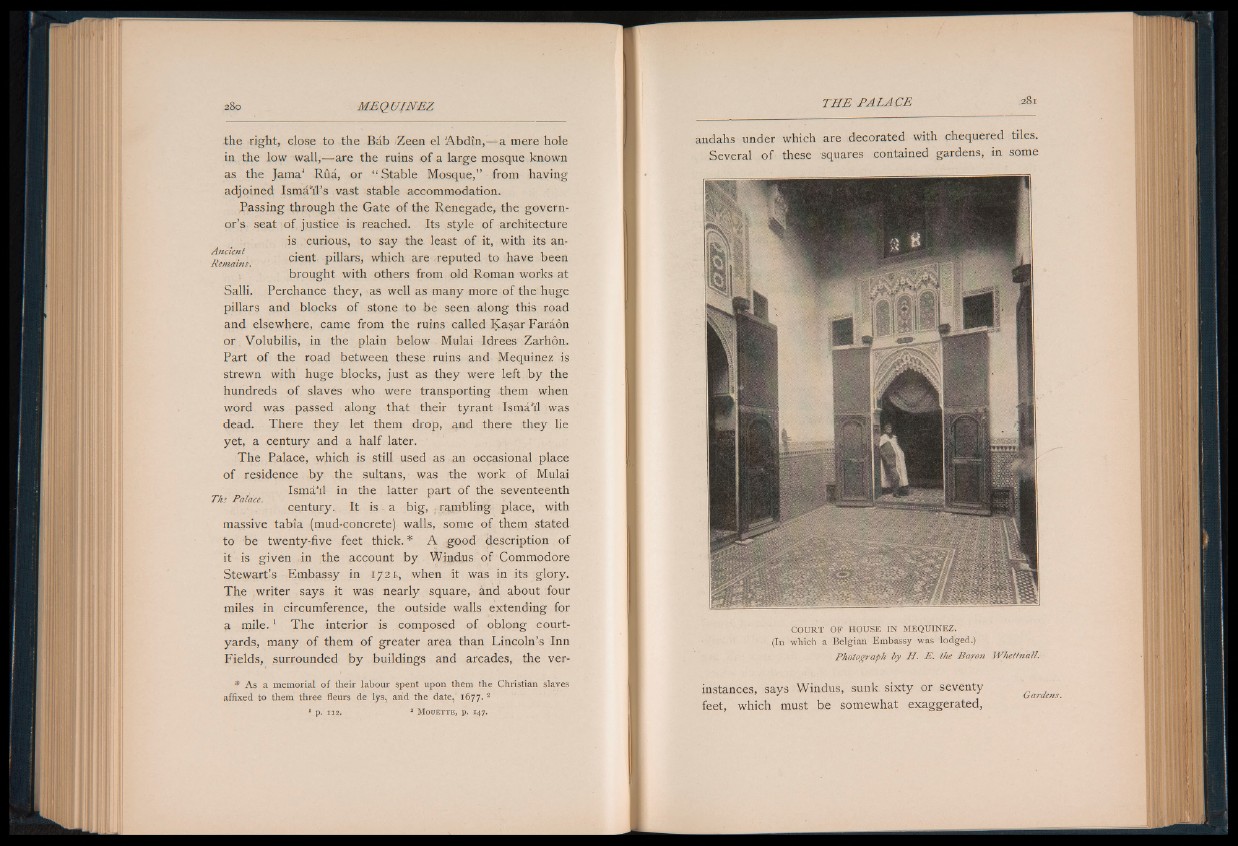
the right, close to the Bab Zeen el Abdin,— a mere hole
in the low wall,— are the ruins o f a large mosque known
as the Jama' Rua, or “ Stable Mosque,” from having
adjoined Ismahl’s vast stable accommodation.
Passing through the Gate of the Renegade, the governor’s
seat of justice is reached. Its style of architecture
is curious, to say the least of it, with its anncient
cient pillars, which are reputed to have been Kemains. * r
brought with others from old Roman works at
Salli. Perchance they, as well as many more of the huge
pillars and blocks of stone to be seen along this road
and elsewhere, came from the ruins called Kasar Faraon
or Volubilis, in the plain below Mulai Idrees Zarhon.
Part of the road between these ruins and Mequinez is
strewn with huge blocks, just as they were left by the
hundreds of slaves who were transporting them when
word was passed along that their tyrant Isma‘i'1 was
dead. There they let them drop, and there they lie
yet, a century and a half later.
The Palace, which is still used as an occasional place
of residence by the sultans, was the work of Mulai
IsmaAl in the latter part of the seventeenth
The Palace. T . , . , ,
century. It i s . a big, - rambling place, with
massive tabia (mud-concrete) walls, some of them stated
to be twenty-five feet thick.* A good description of
it is given in the account by Windus o f Commodore
Stewart’s Embassy in 1721., when it was in its glory.
The writer says it was nearly square, and about four
miles in circumference, the outside walls extending for
a mile.1 The interior is composed of oblong courtyards,
many of them of greater area than Lincoln’s Inn
Fields, surrounded by buildings and arcades, the ver-
* As a memorial of their labour spent upon them the Christian slaves
affixed to them three fleurs de lys, and the date,’ 1677. 2
1 p . 1 1 2 , 1 M o u e t t e , p . 1 4 7 .
andahs under which are decorated with chequered tiles.
Several of these squares contained gardens, in some
COURT OF HOUSE IN MEQUINEZ.
(In which a Belgian Embassy was lodged.)
Photograph by H. E . the Baron Whet/nall.
instances, says Windus, sunk sixty or seventy Gardens
feet, which must be somewhat exaggerated,